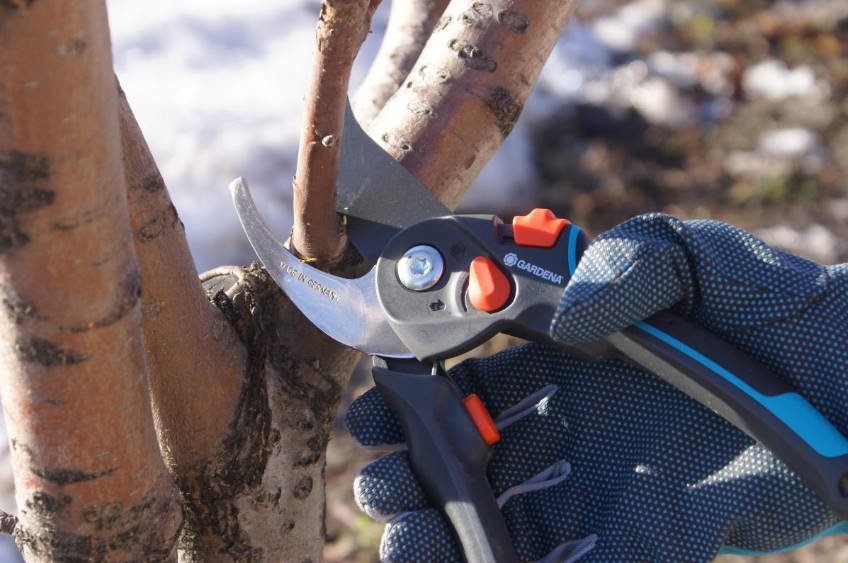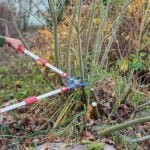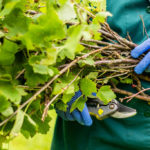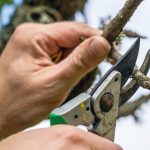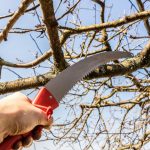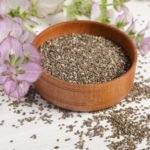Hello, dear gardeners. Today we will try to deal with the methods and techniques of trimming — that is, with direct actions to implement it. This is the tactics of pruning.
You come to the tree and decide the strategic question: whether you form the crown, or rejuvenating pruning is needed, or simply supporting, regulating pruning. You approach the tree like a sculptor. And you decide that you need to remove the excess. And that’s exactly how it is unnecessary to remove, how and what tool is the pruning technique and tactics.
Ways of trimming
The student’s bike says, ” Pruning is easy. After all, it has only two main ways — shortening and thinning.”
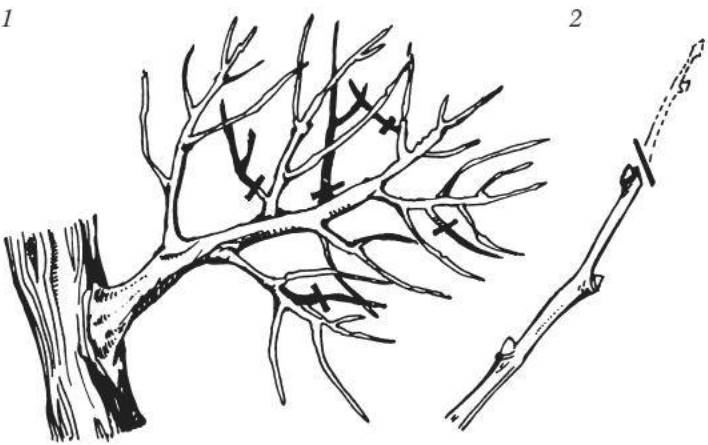
1-thinning, 2-shortening.
When shortening,we reduce the length of the branch. When thinning-remove excess branches entirely. But these methods need to be applied technically correctly and where you need it. And sometimes, when you start using one method, you move on to another. For example, in student practice, we cut the garden. We were given a simple task-to shorten the crowns, so they do not interfere with tractors to cultivate the soil in the aisles. We started shortening the branches. But then they realized that it is long and difficult to shorten dozens of branches. It is easier to carry out thinning of the crown-to cut a couple of thick skeletal branches, which are turned towards the aisle.
Trimming techniques
Now let’s move on to the techniques. It should be noted that in most cases, cropping is done for transfer. And most often cut on a kidney or branch. Just sticking twigs are not left.
Pruning techniques for shortening
Let’s start by shortening. The purpose of this method of pruning is to increase the productivity and durability of fruit wood, improve the nutrition of the remaining branches. In this case, we use a technique with the same name — shortening. Naturally, only thin branches with a diameter of up to 3 centimeters are shortened. Use a pruner or a garden saw (depending on the thickness of the branch). For good overgrowth, the cut should be smooth, without scoring the bark and splitting the wood.
Shortening is used to hold a branch or the entire crown in the space allocated to them. Therefore, we shorten the annual escape is not on any, but on a well-developed kidney, directed in the right direction for us. To expand too tight crown, cut to the outer kidney. That is, we make a cut above the kidney, which is located on the outer side of the branch:
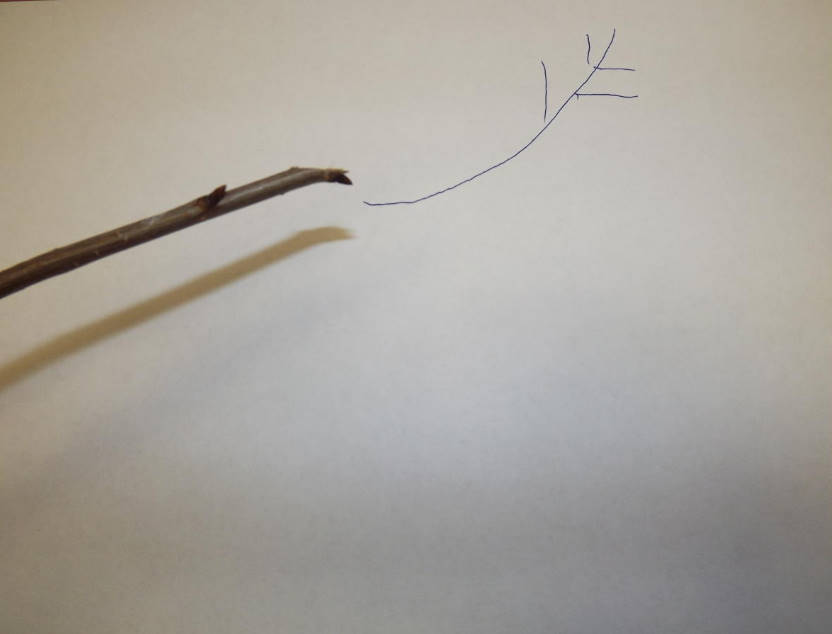
Trim on the outside (external) the kidney
Conversely, to raise a drooping crown or individual branches, cut to the inner kidney:
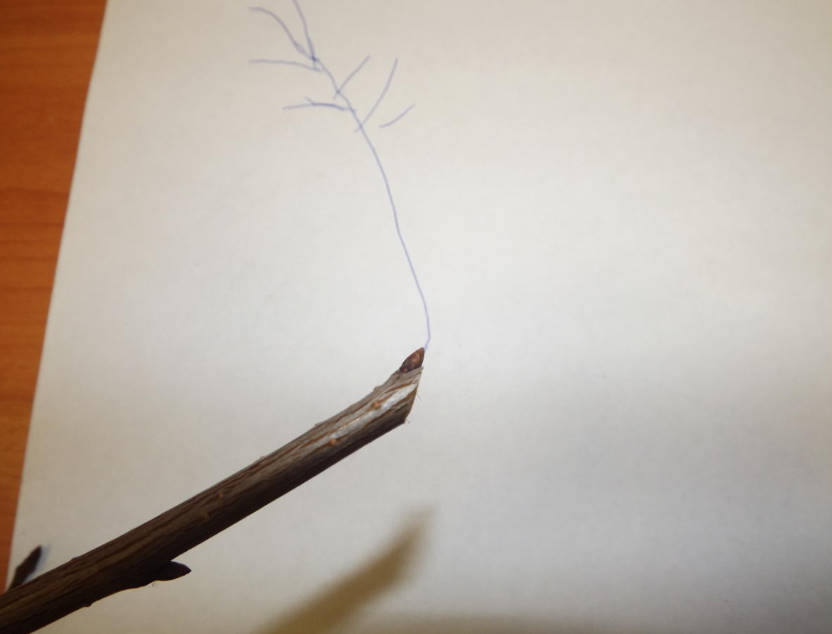
Pruning on the inner kidney
When pruning on the kidney, it is necessary to monitor the correctness of the cuts. Cut is better to perform a sharp garden knife. The technique is as follows. The blade of the knife is put on 2-3 millimeters below the base of the kidney, but on the opposite side of the branch. In this case, the plane of the blade should be at an angle of about 45 degrees to the branch. The end of the cut should be 2 millimeters above the top of the kidney. Holding the branch from the bottom with the other hand, make a sharp cut movement of the knife on yourself.
Here is an example of a wrong cut-too big stump left:

Wrong, too big a stump
And here on the contrary-the cut is made too low:
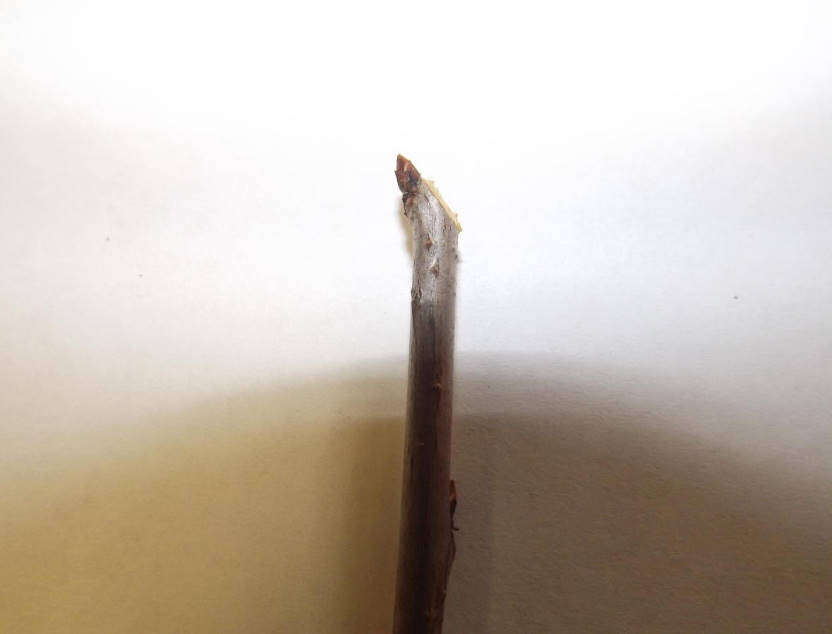
Wrong,” stabbed ” kidney
That’s right:
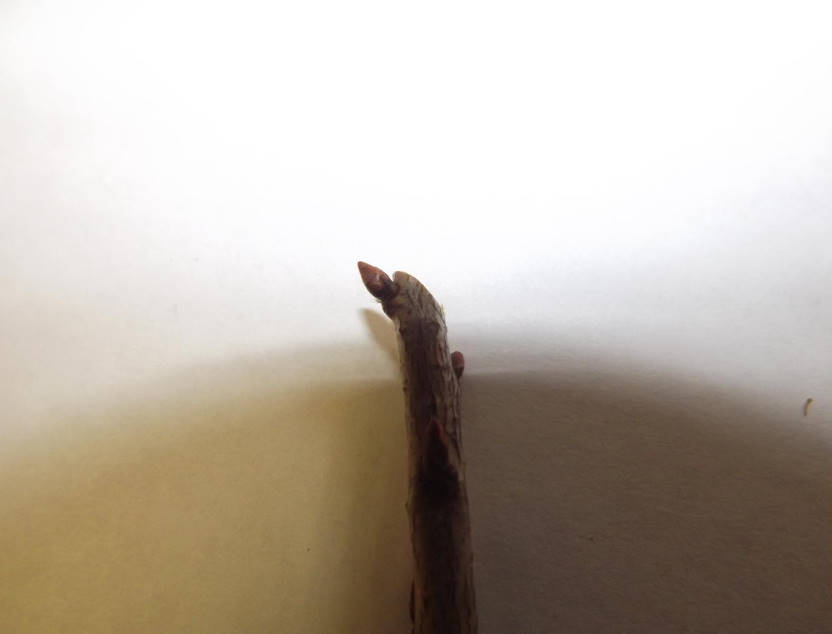
Correct cropping
Pruning techniques for thinning
When thinning, we remove unnecessary branches: departed at an acute angle, looking inside the crown, growing down, parallel and simply do not fit into the concept of the crown.
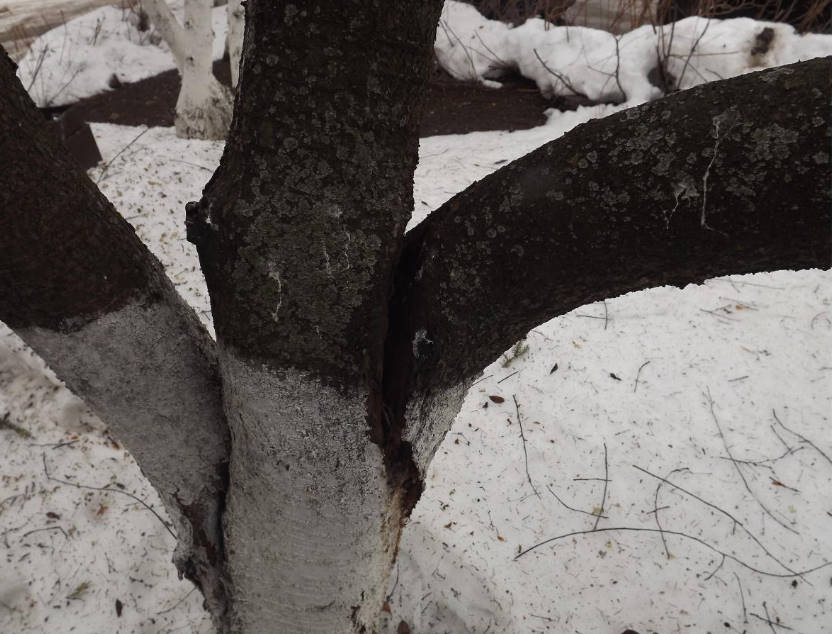
Left the branch at an acute angle, the tree begins to break
The cut is made on the annular influx at the base of the branch or where it should be. Therefore, this technique is called pruning on the ring. If the cut is made correctly, the wound on the tree is well tightened.
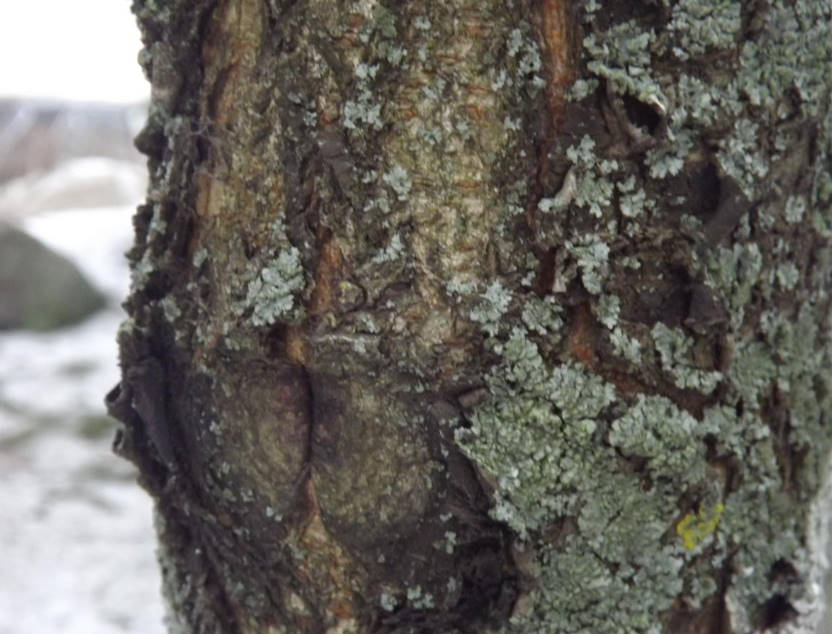
Cut on the ring, all overgrown
If you leave the knots, bullies, the influx in this place will not be formed, the wound does not overgrow:
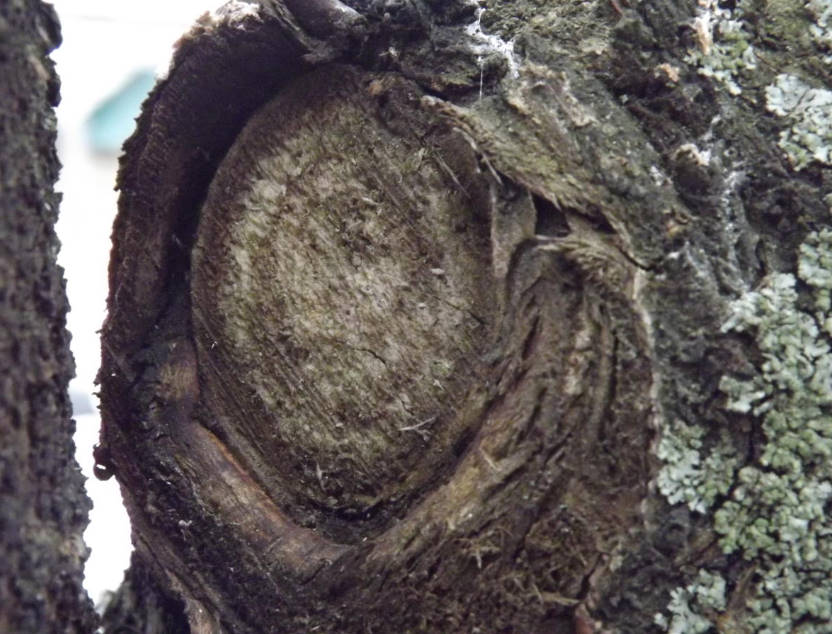
At the top of the mini-knot, the wound does not overgrow
Here is another example of a wrong cut:
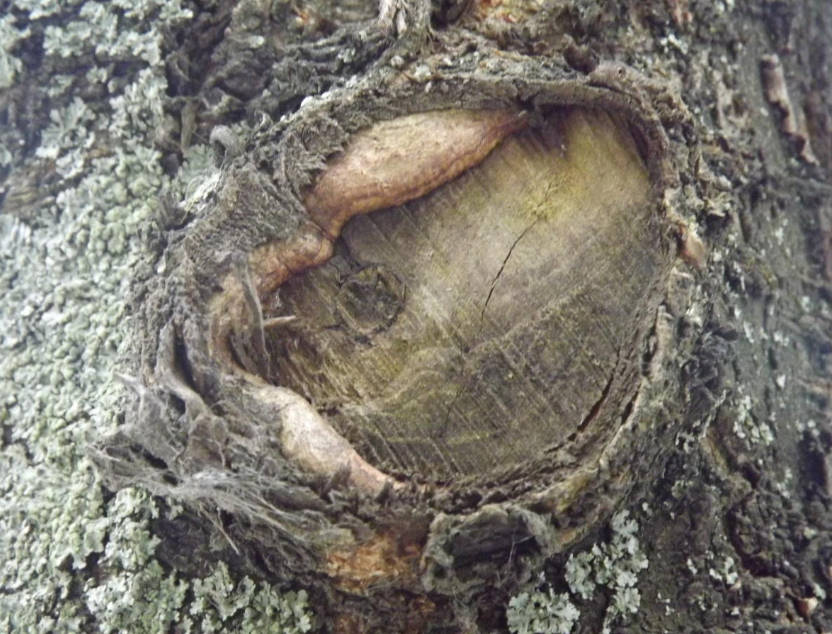
Right mini-mote, it’s not overgrown
Thick branches cut out in parts. First, at a distance of 20 centimeters from the base of the wash down from the bottom, then the second washed down from the top, retreating from the first 5 centimeters further from the trunk, then cut the stump.
This method helps to lighten the crown, without causing a strong growth of the branches left; also used during the fruiting period to lighten the crowns and reduce the height of the trees. By removing a large number of overgrown fruit branches under the harvest year, we carry out the load of fruits. For trees with a strong educational ability to beat thinning-an alternative to shortening, which for such trees is unacceptable.
When thinning, instead of removing a large number of small branches, it is better to cut one or two large ones. If there is no annular influx, it is necessary to take into account that after the branch should remain a knot length of 3 – 4 millimeters — only such a cut will be delayed with time by the bark. If you cut closer to the trunk, the wound will not be delayed by the bark, eventually a hollow will be formed. And if we leave a big knot, it will not overgrown with bark and will remain a place of accumulation of pests and diseases.
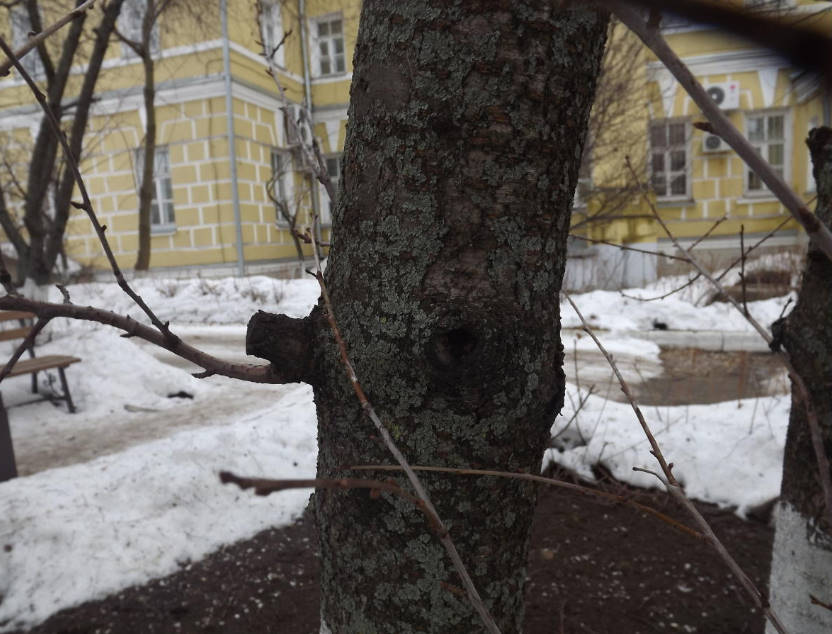
And such knots are generally unacceptable
If you need to cut a thick branch growing at an acute angle, around which there is no annular influx, to determine the correct cut line, use simple technique. Spend mentally or marker one line along the trunk or branch from which the cut branch, and the second — perpendicular to the cut branch. Divide this angle in half and follow this line (bisector).
Other cropping methods
All classifications practices are conditional. There is another method for trimming of transfer or with transfer into the side branch. This method can be considered both shortening and thinning. Performed with a pruner branch thickness up to 3 centimeters. But if the branch is thicker, the work saw.
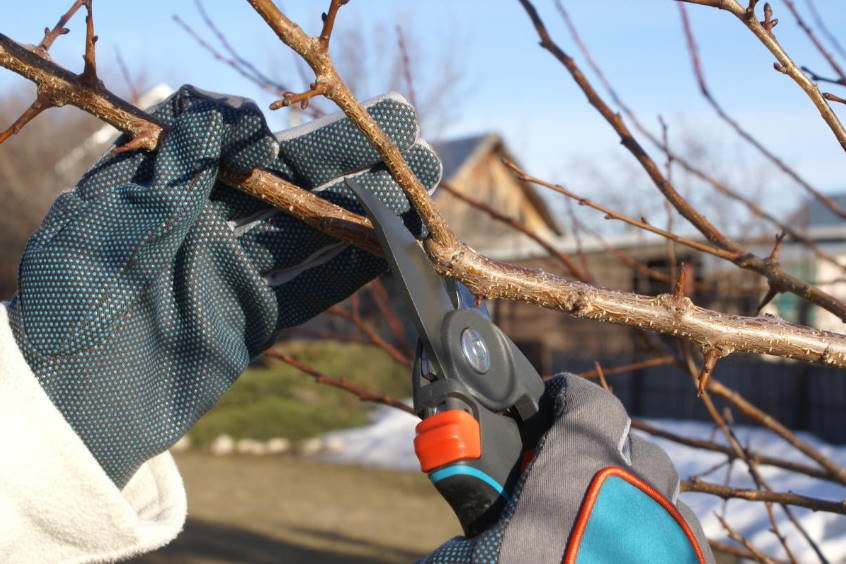
Cropping for transfer
Cut off the extra branch is not on the kidney, and on the side branch or overgrown twig, but oriented in the right direction. Also, this technique is used to change the direction of the branch growth, to thin the crown, to limit its size of the crown or reduce the height. Pruning on the transfer increases the growth of branches located below the cut, improves the light mode of the crown, normalizes the load of the tree. When you perform this cutting, the same principle is used as when you cut it on the kidney: cut the branch at an angle of 30 degrees in the direction opposite to the branch to which you are transfering.
Can be and not cut. Alternative methods of formation
If you have reached the heights of skill and see the architecture of the crown, you can take preventive measures. You can shape the crown literally with your fingers. Although it is time-consuming, and stretched in time. For this there are their receptions.

Most often you have to cut. But a true master can form the crown literally with his fingers
The first reception — pinching. This technique you have repeatedly used in vegetable growing, it is used in viticulture. You just pinch the top of the tree’s escape like the top of a tomato or cucumber stepson. That is, limit the growth of those shoots that you do not like during the formation of the crown. Escape stops in growth, and in the axils of leaves laid other shoots or axillary buds.
The next step is the blinding of the kidney. We do not wait for the growth of escape, and in the spring with a knife or nail remove the main and additional kidneys. This technique is used in the formation of the crown of one-and two-year trees. That is, the trees are still tiny — why wait until the branches grow, the tree in food spend, and then shears to cut it. All delete in advance.
Well, almost vegetable is also a technique called the breaking of the shoots. If after a severe spring pruning we went to grow the tops, not waiting for their lignification does and growth, and break out manually. As the shoots of tomatoes.
There are two more methods, when we do not cut the branch, and bring it up certain “cruel” methods.
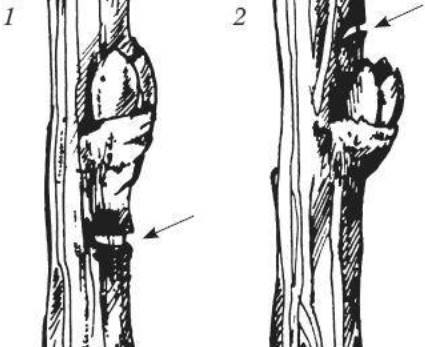
1 – weakening shoot growth; 2 – the trigger shoot growth.
Above or below the Bud or branch is removed a strip of bark with a piece of wood with a width of 2 to 4 millimeters. The incisions are cross-shaped, or rectangular, or semilunar. If the cut is made over the kidney or branch, its growth increases. If under kidney or branch – its growth is weakened. So we change the intensity of the downstream and upstream nutrients. It is used in the formation of the crown of one – and two-year trees.
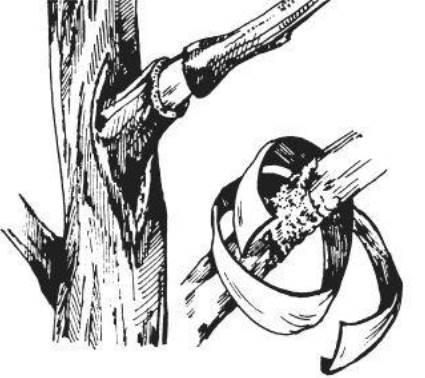
Banding of branches
A banding is used already for large trees-to accelerate the beginning of fruiting branches that are not included in the skeleton. To do this, not far from the base of the branch, remove the strip of bark with half rings up to 1 centimeter wide. The wound is covered with garden brew and tied with film. This technique prevents the outflow of assimilants from the branch, and it grows fruit buds, begins to bear fruit.
I think we will return to this topic again and show everything on the concrete trees.
